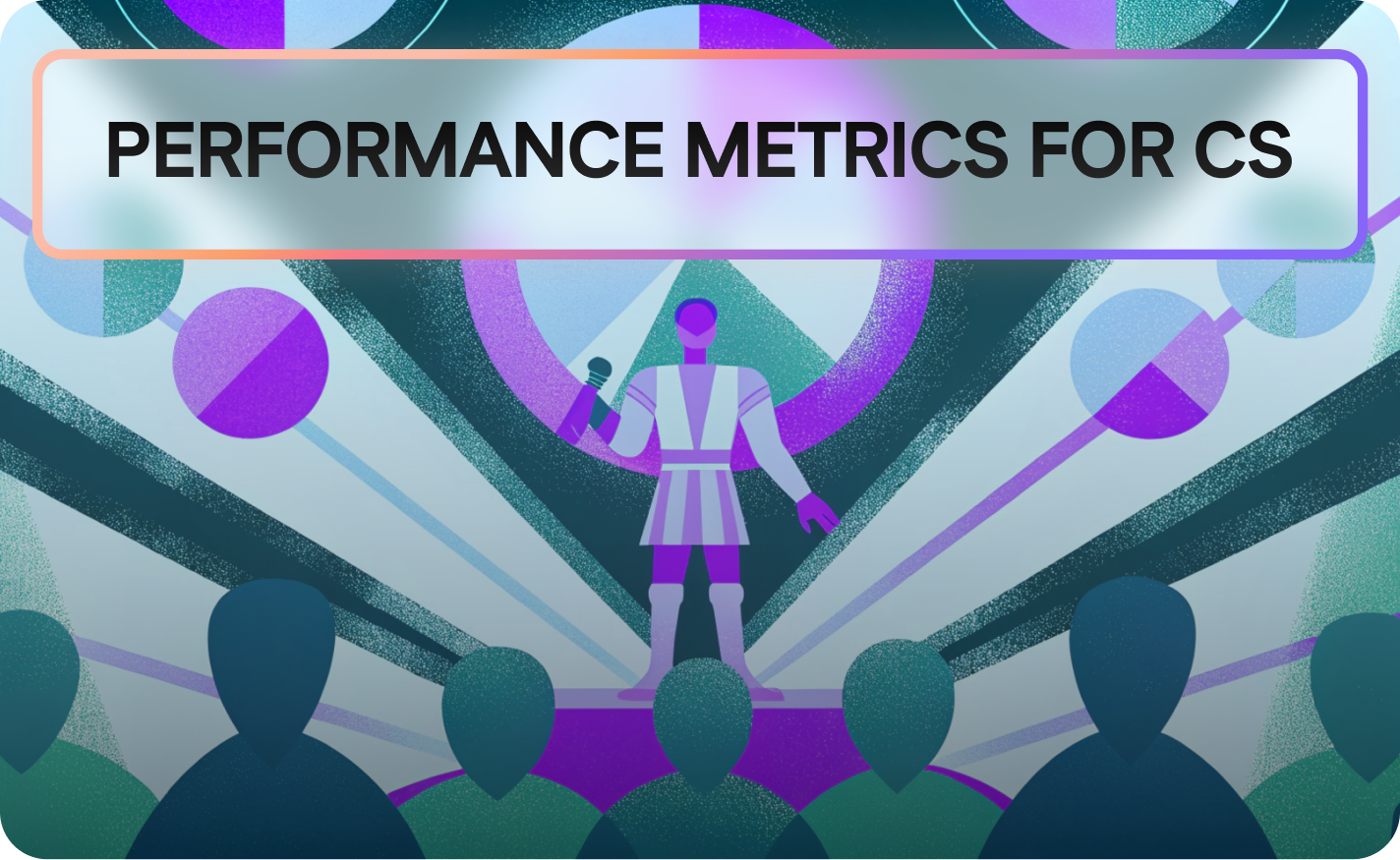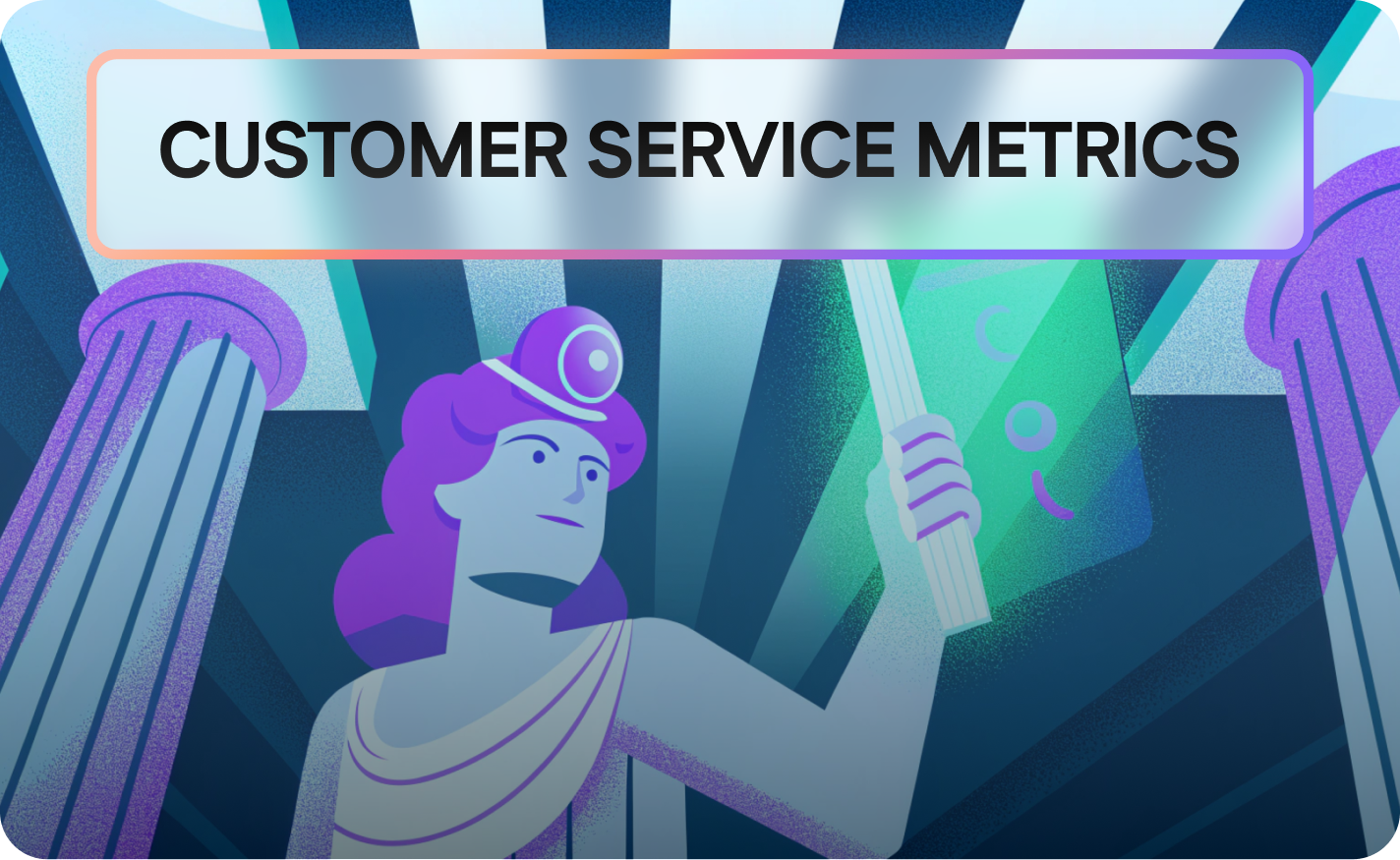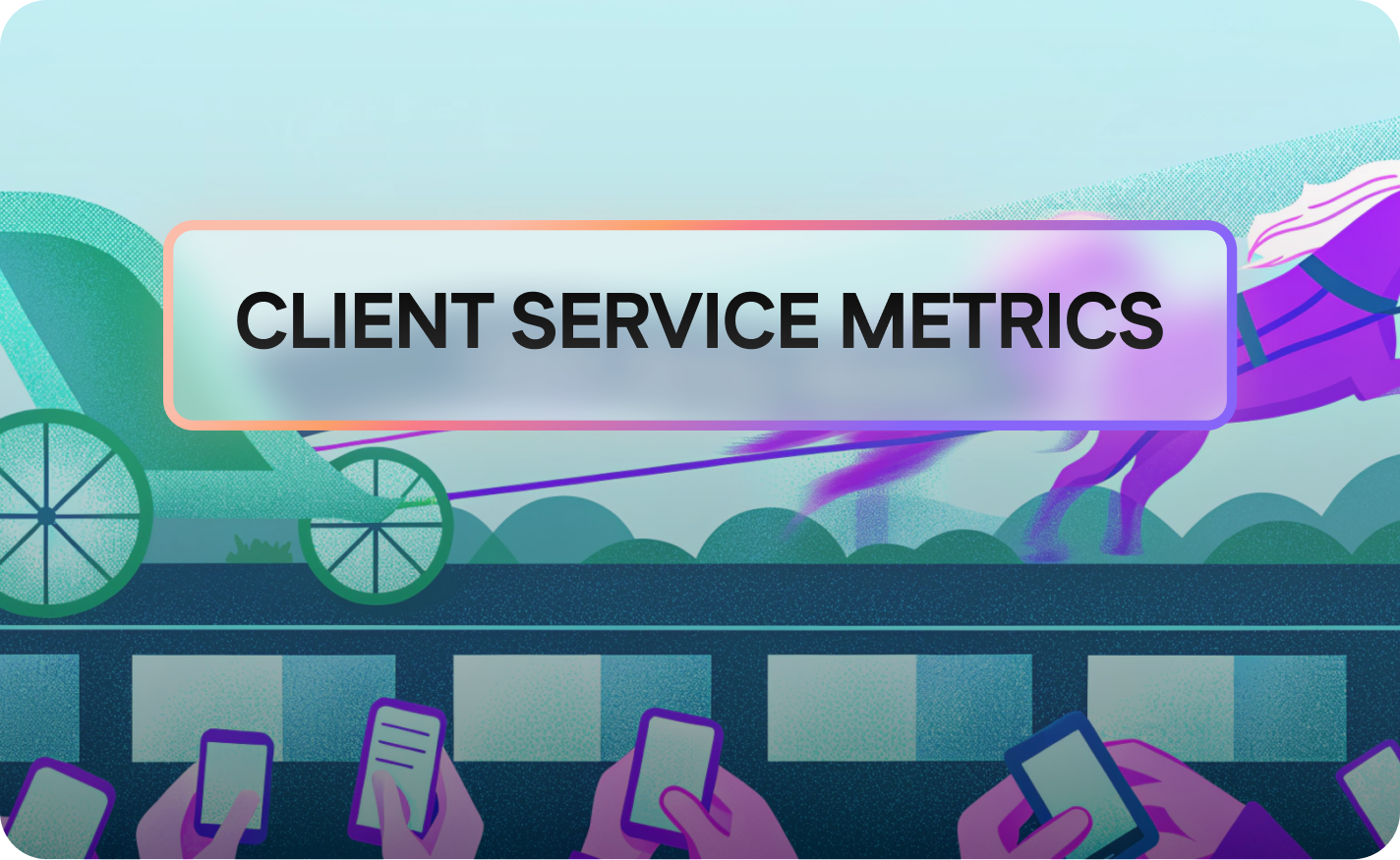Performance Metrics for Customer Service: Key Metrics to Measure

In today's competitive business landscape, excelling in customer service is more critical than ever. To ensure your customer support is not just satisfactory but truly exceptional, it’s essential to understand and implement effective customer service metrics. These metrics provide actionable insights that drive improvements in customer satisfaction, customer loyalty, and overall business success.
Understanding Customer Service Metrics

What Are Customer Service Metrics?
Customer service metrics are quantifiable measurements that help you measure customer service performance. These metrics provide data-driven insights into how well your customer service team is meeting customer expectations, resolving customer issues, and enhancing the customer experience. By tracking these metrics, businesses can identify areas of strength and opportunities for improvement, ultimately leading to loyal customer relationships and increased customer retention.
Importance of Measuring Customer Service Performance
Why is it so important to measure customer service performance? Measuring performance provides a clear picture of how your customer support team is performing. It allows you to identify bottlenecks, streamline processes, and address customer pain points effectively. According to Qualtrics, 52% of U.S. customers switch providers due to poor experiences. By tracking customer service metrics like customer effort score or customer satisfaction score, businesses can proactively improve customer satisfaction and reduce customer churn, ultimately boosting customer retention rate.
Key Metrics to Track for Effective Customer Support
Effective customer support relies on measuring key metrics. Specifically, important metrics to track include:
- Customer Satisfaction Score (CSAT)
- Net Promoter Score (NPS)
- Customer Effort Score (CES)
These customer satisfaction metric tools provide insights into different aspects of the customer journey. Regularly monitoring these support metric tools enables businesses to address customer issues promptly and improve customer loyalty.
Performance Metrics for Customer Service

Defining Key Performance Indicators (KPIs)
What exactly are Key Performance Indicators (KPIs) in the context of customer service? KPIs are specific, measurable indicators that help you track the performance of your customer service efforts. These metrics like CSAT provide a clear view of whether your customer service team is meeting its goals and contributing to overall business objectives. By carefully defining and monitoring these KPIs, businesses can ensure their customer service representatives are aligned with customer satisfaction.
How to Measure Customer Service Effectiveness
So, how do you actually measure customer service effectiveness? Measuring effectiveness involves tracking a range of metrics that reflect different aspects of the customer interaction. This includes metrics like First Contact Resolution (FCR), Average Handle Time (AHT), and Customer Churn Rate. These measures help to identify areas where the customer service team can improve, reduce customer churn rate, and increase efficiency in resolving customer issues, ultimately fostering loyal customer relationships.
Identifying Metrics to Measure Customer Satisfaction
Identifying the right metrics to measure customer satisfaction is crucial for enhancing the customer journey. There are several methods that can be used to gain insight into customer satisfaction, including:
- CSAT surveys
- NPS
- Feedback forms
Analyzing customer feedback collected through these support metric tools helps businesses understand what they are doing well and where they need to make improvements to increase customer satisfaction, measure the progress, and ensure meeting customer expectations.
Customer Satisfaction Metrics

Understanding Customer Satisfaction Score (CSAT)
What is the Customer Satisfaction Score, or CSAT? It is a customer satisfaction metric that gauges the degree to which customers are happy with a specific customer interaction or customer experience. Using CSAT, you can measure customer satisfaction after a customer service encounter and measure progress toward meeting customer expectations, resolve customer issues, and foster loyal customer relationships.
Role of Customer Effort Score (CES) in Customer Experience
The Customer Effort Score (CES) is vital in assessing the customer experience. This customer service metric helps to measure customer satisfaction by indicating how easy it is for customers to get their customer issue resolved. When customers find it easy to interact with your customer support, this positively impacts customer loyalty and helps improve customer retention. Monitoring CES helps the customer service team address customer friction points, contributing to a smoother customer journey.
Net Promoter Score (NPS) and Its Importance
What about Net Promoter Score, or NPS? NPS is another critical customer service metric that helps measure customer loyalty. By asking customers how likely they are to recommend your brand, you can gauge overall sentiment and identify promoters or detractors. NPS is essential because it directly correlates with customer retention rate and provides valuable insights into areas needing improvement to improve customer satisfaction.
Efficiency Metrics in Customer Service

First Contact Resolution (FCR) as a Key Metric
First Contact Resolution (FCR) is a customer service metric that tracks the percentage of customer issues resolved during the first customer interaction. A high FCR means fewer follow-ups and happier customers, which can significantly boost customer satisfaction. Using tools like LiveSession, you can analyze sessions to see why some customer interactions require multiple contacts.
Average Handle Time (AHT) and Its Impact
The Average Handle Time (AHT) measures the average time a customer service representative spends handling a customer inquiry. While efficiency is crucial, the goal isn't just to minimize AHT but to balance speed with quality customer support. It is a key performance indicator to ensure customer service representatives are both quick and effective. By monitoring AHT, businesses can streamline processes and improve customer satisfaction, address customer concerns efficiently.
Significance of First Response Time (FRT)
Why is First Response Time (FRT) so important? FRT measures how quickly your customer support team responds to a customer inquiry. Quick responses show customers you value their time, boosting customer satisfaction and building trust. It is a crucial customer service metric since delayed responses can lead to frustration and increase customer churn. Prioritize timely responses to improve customer experience and foster loyal customer relationships.
Retention Metrics

Measuring Customer Churn Rate
The customer churn rate is a critical customer service metric. What is customer churn, exactly? It measures the percentage of customers who stop using your product or service over a given period. High customer churn can signal dissatisfaction or unmet needs, while reducing customer churn indicates improved customer satisfaction and customer loyalty. By monitoring and analyzing customer churn, businesses can take proactive steps to improve customer experience and improve customer retention.
Understanding Renewal Rate and Its Importance
What is the renewal rate and why should you care? The renewal rate measures the percentage of customers who renew their subscriptions or contracts. A high renewal rate indicates strong customer satisfaction and customer loyalty, reflecting the value customers find in your product or service. Monitoring this customer service metric helps businesses understand the long-term performance of their offerings and identify areas for improvement to improve customer retention.
Strategies to Improve Customer Retention
To improve customer retention, businesses must employ various strategies that enhance the overall customer experience. Regularly collecting and acting on customer feedback ensures you are meeting customer expectations and addressing any pain points. Additionally, personalized customer support can foster stronger relationships and increase customer loyalty. By proactively working to improve customer satisfaction, businesses can significantly boost their customer retention rate and reduce customer churn.
Volume and Workload Metrics

Tracking Ticket Volume for Better Resource Allocation
What does it mean to track ticket volume, and why is it important? Ticket volume, a key customer service metric, tracks the number of customer support tickets received over a specific period. Monitoring ticket volume helps allocate resources effectively, ensuring the customer service team is adequately staffed to resolve customer issues promptly. Spikes in ticket volume often indicate underlying product issues or customer experience problems, which need immediate attention.
Understanding Ticket Backlog and Its Management
What is a ticket backlog, and how does it impact your customer service performance? Ticket backlog represents the number of unresolved customer support tickets at any given time. A high ticket backlog indicates the customer service team is struggling to keep up with demand, potentially leading to increased resolution times and decreased customer satisfaction. Effective backlog management involves prioritizing tickets, streamlining workflows, and ensuring adequate staffing to address customer concerns efficiently.
Advanced Metrics for Strategic Insights
Customer Lifetime Value (CLV) and Revenue Analysis
What is Customer Lifetime Value (CLV), and how does it tie into revenue analysis? CLV estimates the total revenue a single customer will generate throughout their relationship with your business. This advanced customer service metric justifies investments in customer support by highlighting the long-term value of loyal customer relationships. By understanding CLV, businesses can prioritize personalized customer interaction, improve customer satisfaction, and improve customer retention, ultimately driving revenue growth.
Net Dollar Retention (NDR) as a Growth Indicator
What does Net Dollar Retention (NDR) really tell you about your business? NDR measures the revenue retained from existing customers, considering upsells, downgrades, and customer churn. An NDR above 100% indicates revenue growth from the existing customer base, showcasing successful customer loyalty and expansion strategies. This customer service metric is a strong indicator of long-term sustainability and growth potential, making it crucial for strategic decision-making and improve customer satisfaction.
Real-World Case Studies
Success Stories: Companies Leveraging Metrics
What happens when companies prioritize customer service metric? Consider companies like Zappos, known for its high Net Promoter Score (NPS), achieved through exceptional customer support that fosters brand advocacy DigitalDefynd. Another example is LEGO, which turned a negative experience into a positive one by proactively replacing a child’s broken set, boosting customer satisfaction and customer loyalty [Fluent Support]. These success stories demonstrate the power of focusing on meeting customer expectations.
Impact of Metrics on Operational Efficiency
How do customer service metric actually impact operational efficiency? A healthcare provider improved its First Contact Resolution (FCR) by effectively resolving complex cases ([Yellow.ai] E-commerce companies have also seen significant results; one company reduced refunds by 25% by tracking resolution time and customer satisfaction, saving over $10,000 in the first month [Guiding Metrics]. Another e-commerce firm optimized its Google AdWords campaigns using customer feedback, boosting profits by 2400% ([Guiding Metrics]. LiveSession can help you identify the reasons behind these metrics by seeing user behavior.
Industry Trends and Challenges
Emerging Trends in Customer Service Metrics
What's new in customer service metric? Artificial intelligence (AI) and automation are transforming the landscape, providing real-time insights into user behavior and enhancing metrics like Customer Effort Score (CES) and First Contact Resolution (FCR). The shift towards omnichannel customer support is also significant, with 70% of service leaders emphasizing support across all channels [HubSpot]. These trends aim to improve customer experience and meeting customer expectations.
Common Challenges in Measuring Customer Service Performance
What are the common pitfalls in measuring customer service performance? One challenge is focusing on vanity metrics like ticket volume instead of actionable metrics like Customer Effort Score (CES). Data overload can also overwhelm teams, making it difficult to identify key insights. To avoid these issues, prioritize a balanced scorecard of experiential and operational metrics, focusing on 3-5 key metrics aligned with business goals [Freshworks].
Best Practices for Implementing Customer Service Metrics
Selecting Relevant Metrics for Your Business Goals
How do you choose the right customer service metric for your business? Begin by aligning metrics with your specific business goals. If efficiency is your priority, focus on First Contact Resolution (FCR). If you aim to boost customer loyalty, prioritize Net Promoter Score (NPS). Selecting the right customer service metric ensures you measure customer service in areas that truly matter, contributing to improved customer satisfaction and customer retention.
Setting Clear Targets and Benchmarks
Why is it important to set clear targets and benchmarks for your customer service metric? Establishing benchmarks based on industry standards and company needs provides a clear framework for evaluating customer service performance. These benchmarks help track progress and identify areas needing improvement. Clear targets motivate the customer service team, ensuring they are aligned with business objectives and striving for excellence in addressing customer concerns.
Using Tools for Ongoing Monitoring and Improvement
How can tools enhance your customer service performance? Platforms such as LiveSession offer session replays to identify friction points affecting metrics. LiveSession helps in observing user interactions, pinpointing areas of difficulty, and optimizing the overall customer experience. Regularly monitoring metrics and using tools for analysis leads to actionable insights, enabling continuous improvement in customer service performance and increased customer satisfaction.
Conclusion and Call to Action
Driving Customer Satisfaction through Effective Metrics
Why is driving customer satisfaction through effective metrics essential? By tracking and analyzing relevant customer service metric, businesses gain actionable insights to improve customer experience and meet customer expectations. Focusing on metrics like CSAT, NPS, and CES helps ensure the customer service team meets and exceeds customer interaction. Effective metric-driven strategies contribute to customer loyalty, customer retention, and sustainable business growth.
Encouraging Action: Start Measuring Your Customer Service Metrics
Ready to elevate your customer support? Start measuring your customer service metrics today to gain actionable insights. Try LiveSession to observe user interactions, identify pain points, and enhance metrics like CSAT, FCR, and CES. Align your metrics with business goals to drive customer satisfaction and sustainable growth. By taking action now, you can transform your customer support into a competitive advantage.
Related articles
Get Started for Free
Join thousands of product people, building products with a sleek combination of qualitative and quantitative data.



